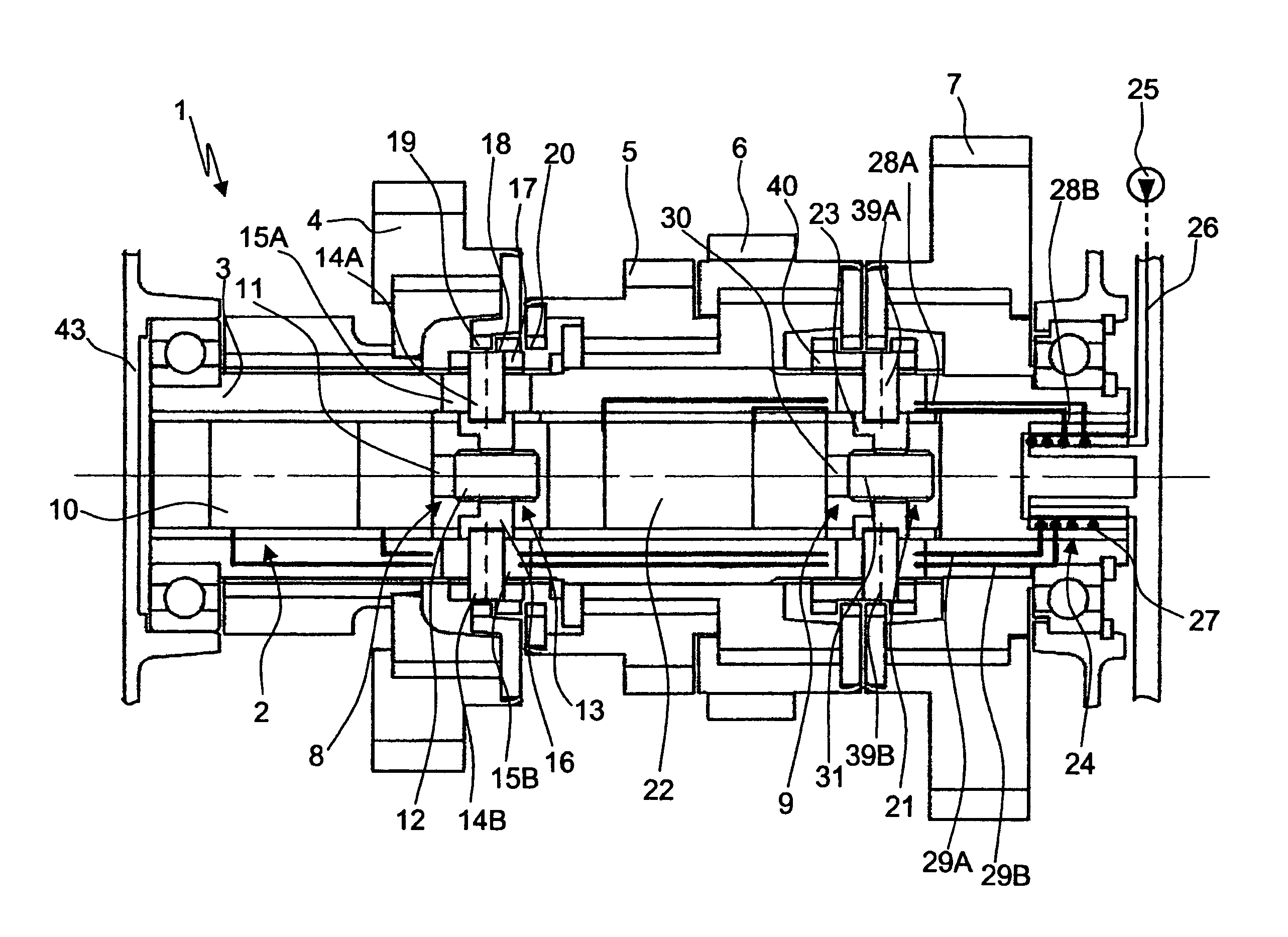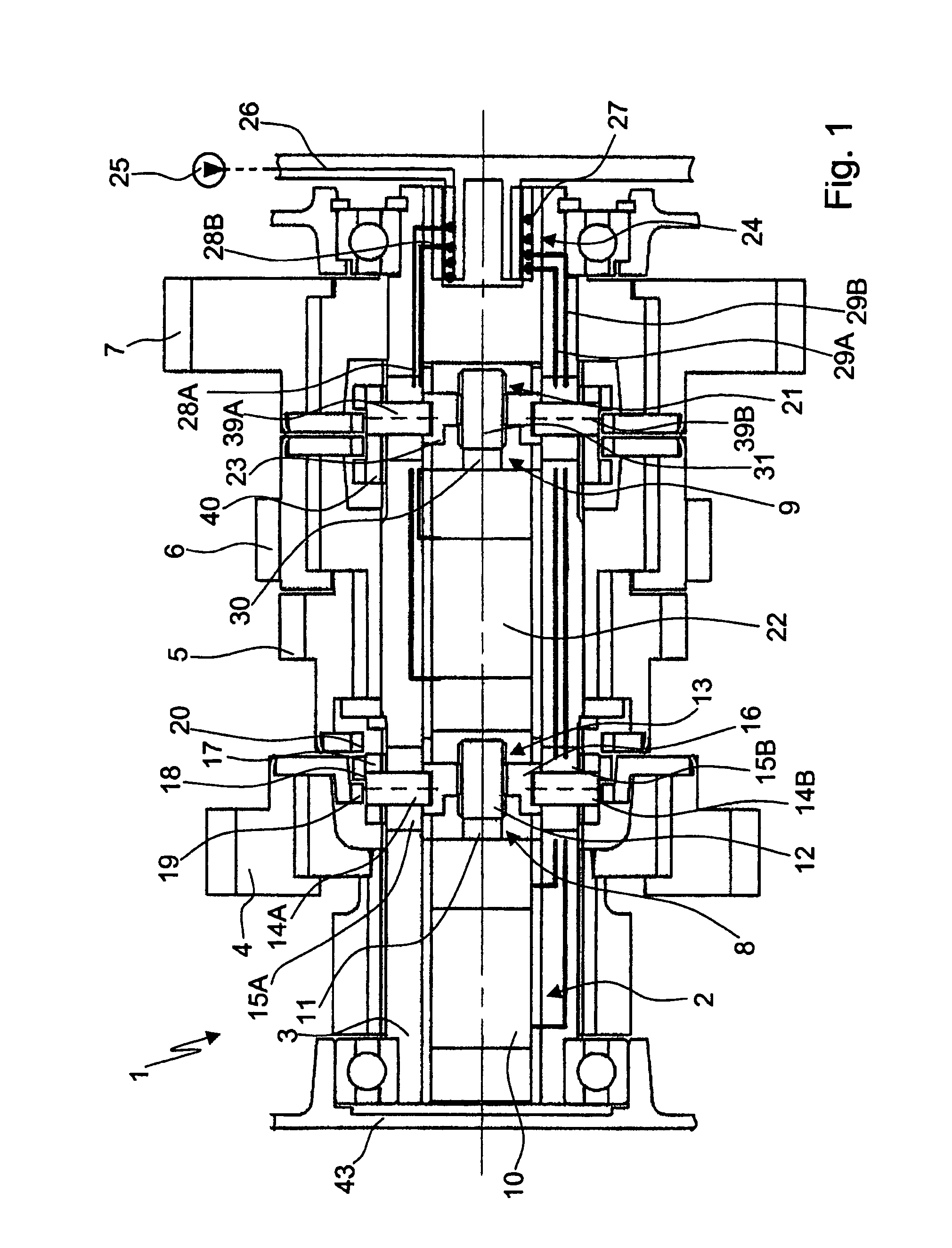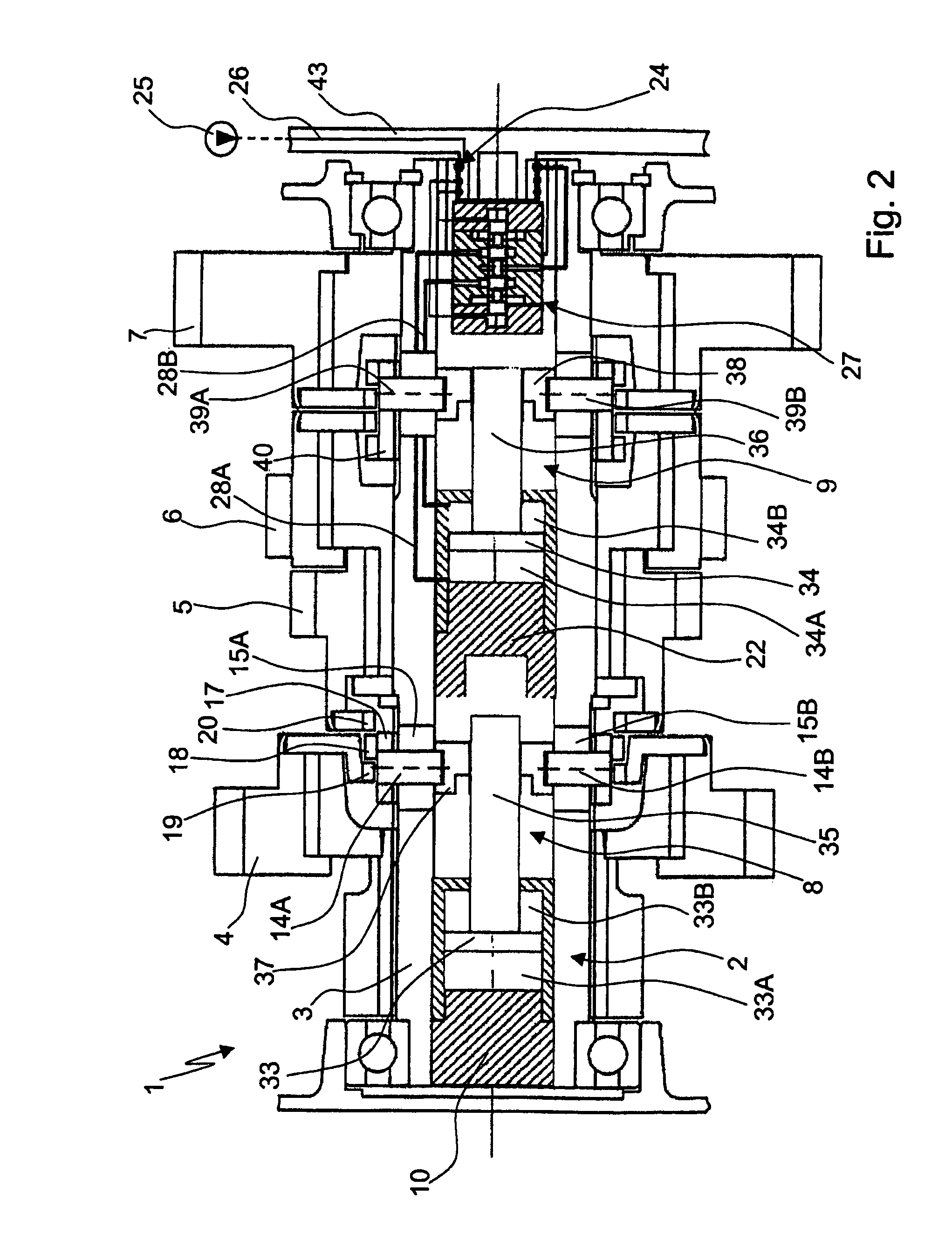Device for actuating a gearwheel, which is designed as a loose wheel, of a transmission device
a gearwheel and gearwheel technology, applied in mechanical devices, gearwheels, transportation and packaging, etc., can solve the problems of increasing the actuation force, attempting to actuate from the inside of the transmission shaft outward, etc., to achieve the effect of reducing the need for structural space, reducing the cost and complexity of sealing, and small demand for structural spa
- Summary
- Abstract
- Description
- Claims
- Application Information
AI Technical Summary
Benefits of technology
Problems solved by technology
Method used
Image
Examples
Embodiment Construction
[0031]FIG. 1 shows a partial longitudinally sectioned view of a transmission device 1 made as a step-down transmission, which comprises a device 2 for rotationally fixing a shaft 3, in the form of a countershaft, with a plurality of gearwheels 4, 5, 6 and 7 made as loose wheels and mounted to rotate on the shaft 3.
[0032]The device 2 can also be used in different transmission devices, such as automated shift transmissions, double clutch transmissions or planetary transmissions, for the automated actuation of a transmission device during gearshift operations.
[0033]Parallel to the shaft 3 there is a main transmission shaft (not shown), on which are arranged a plurality of gearwheels made as fixed wheels in such manner that each fixed wheel meshes with one of the gearwheels 4 to 7.
[0034]The loose wheels 4 and 5 and the loose wheels 6 and 7 can be actuated alternately by means of engaging mechanisms 8 and 9 of the device 2 in such manner that the loose wheels 4 and 5 or 6 and 7 respectiv...
PUM
 Login to View More
Login to View More Abstract
Description
Claims
Application Information
 Login to View More
Login to View More - R&D
- Intellectual Property
- Life Sciences
- Materials
- Tech Scout
- Unparalleled Data Quality
- Higher Quality Content
- 60% Fewer Hallucinations
Browse by: Latest US Patents, China's latest patents, Technical Efficacy Thesaurus, Application Domain, Technology Topic, Popular Technical Reports.
© 2025 PatSnap. All rights reserved.Legal|Privacy policy|Modern Slavery Act Transparency Statement|Sitemap|About US| Contact US: help@patsnap.com



